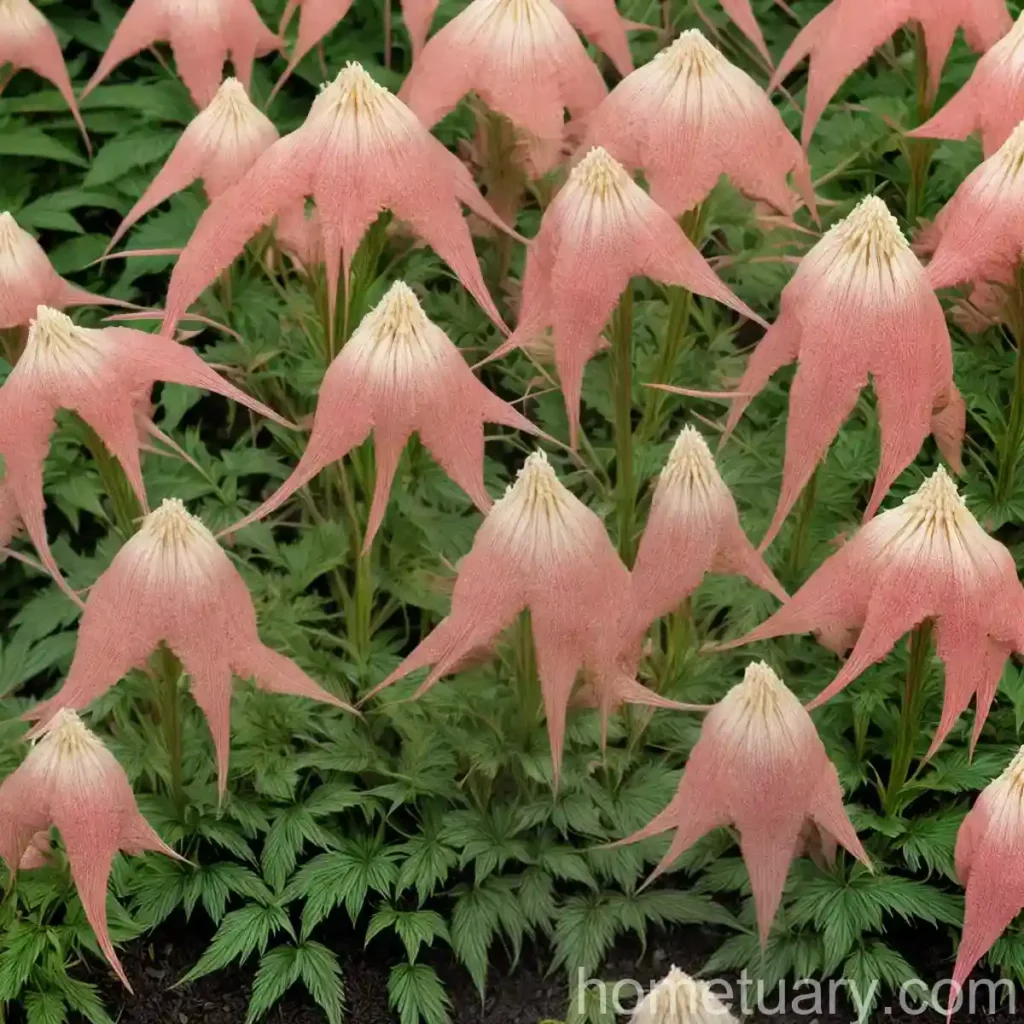Understanding Goatsbeard (Aruncus dioicus ‘Kneiffii’)
What is Goatsbeard (Aruncus dioicus ‘Kneiffii’)?
Goatsbeard, scientifically known as Aruncus dioicus ‘Kneiffii’, is a charming perennial plant that’s known for its feathery plumes of creamy white flowers. This plant belongs to the rose family (Rosaceae) and is native to North America, Europe, and Asia. It is highly valued in landscaping and gardening for its attractive appearance and its ability to thrive in shaded areas.
Key Takeaways: Goatsbeard (Aruncus dioicus ‘Kneiffii’)
- Botanical Name: Aruncus dioicus ‘Kneiffii’
- Common Names: Goatsbeard, Kneiff’s Goatsbeard
- Type: Perennial
- Uses: Ornamental, landscaping, shade garden, pollinator attractant
- Characteristics: Feathery plumes of white flowers, shade-loving, low maintenance
- Disease Resistance: Generally resistant to diseases
- Pest Resistance: Relatively pest-free
Culture
Water
Goatsbeard plants thrive in consistently moist soil, especially during their growing season. They prefer well-draining soil and do not tolerate drought conditions well. Regular watering, particularly during dry spells, is crucial for the health and vitality of goatsbeard plants.
Sunlight
One of the standout features of goatsbeard plants is their ability to thrive in shaded areas. They are well-suited for woodland gardens, as they prefer partial to full shade and are not tolerant of intense, direct sunlight. When grown in full sun, the foliage may scorch, leading to a less attractive appearance.
Fertilizer
A balanced, all-purpose fertilizer applied in early spring can help support the healthy growth of goatsbeard plants. It’s important to avoid over-fertilization, as excessive nutrients can lead to leggy growth and decreased flower production.
Soil
These plants prefer rich, humusy soil that retains moisture but is also well-draining. Amending the soil with organic matter, such as compost or well-rotted manure, can improve soil structure and fertility, creating an optimal growing environment for goatsbeard plants.
Pruning
Pruning of goatsbeard plants is generally minimal. Deadheading the spent flowers can help encourage additional blooming and prevent the plant from expending energy on seed production. In late fall or early spring, any dead or damaged foliage can be removed to maintain a tidy appearance.
Propagation
Goatsbeard plants can be propagated through division or from seed. Division is best carried out in the early spring or fall, and it involves separating the plant into smaller sections, each with its own root system. Sowing seeds directly in the garden in the fall can also result in successful propagation.
Container Popularity
The shade-loving nature and ornamental beauty of Aruncus dioicus ‘Kneiffii’ make it a popular choice for container gardening in shaded patios, balconies, or porches. The feathery plumes of white flowers can add an elegant touch to any outdoor space.
Container Common Diseases
While goatsbeard plants are generally resistant to diseases, container cultivation can sometimes lead to issues such as root rot if the soil becomes waterlogged. It’s important to ensure adequate drainage in containers and to avoid overwatering to prevent disease development.
Disease Diagnosis
Should any signs of disease, such as wilting, discoloration, or unusual spots, appear on the foliage of goatsbeard plants, it is essential to conduct a thorough diagnosis. Identifying the specific symptoms and potential causes can help in determining the appropriate course of action, whether it involves adjusting cultural practices or implementing targeted treatments.
Common Pests
Goatsbeard plants are relatively pest-free, with few significant insect or pest issues. However, occasional encounters with aphids or spider mites may occur. Regular monitoring for signs of pest activity and prompt intervention, if necessary, can help maintain the plants’ vigor.
Botanist’s Tips
- Shade-Loving Appeal: The shade tolerance of goatsbeard plants makes them invaluable additions to gardens and landscapes where few other flowering plants thrive.
- Moisture Management: Ensuring consistent moisture levels in the soil is crucial for the health and overall performance of goatsbeard plants, particularly during warm, dry periods.
- Naturalistic Plantings: Given their woodland origins, goatsbeard plants are excellent choices for naturalistic garden designs and shaded borders.
Fun Facts
- The genus name Aruncus is derived from the Latin word for a bear, possibly referring to the plant’s large, feathery inflorescences that resemble a bear’s beard.
- Goatsbeard plants are known to attract pollinators, including bees and butterflies, with their nectar-rich flowers.
Links to External Resources
- Aruncus dioicus (Goatsbeard) – Royal Horticultural Society
- Perennials for Shade – University of Minnesota Extension
- Landscaping with Perennials – University of Illinois Extension
In conclusion, the goatsbeard plant, Aruncus dioicus ‘Kneiffii’, serves as a magnificent addition to diverse garden settings, from shaded woodland gardens to container displays. Its elegant plumes of white flowers, shade-loving nature, and low-maintenance requirements make it a highly sought-after perennial that brings beauty and allure to any landscape. With the proper cultural practices and attention to its specific needs, this ornamental plant can flourish and captivate for years to come.















